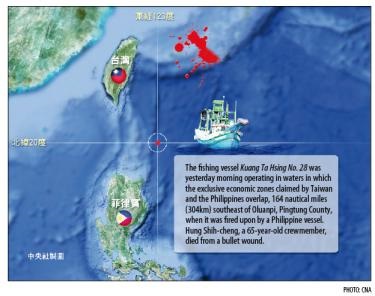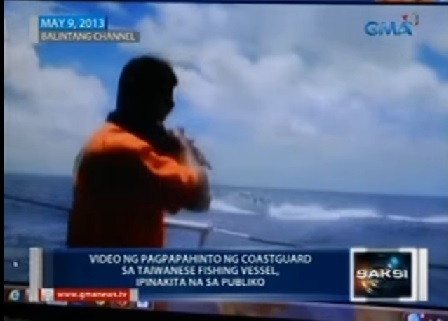
It was triggered by the shooting by members of the Philippine Coast Guard of a Taiwanese fishing vessel in the overlapping maritime borders between the Philippines and Taiwan in the Balintang Channel off Batanes on May 9, 2013. A Taiwanese fisherman, 65-year-old Hung Shih-cheng, was killed.
The Aquino government took the defensive position right away insisting that the Taiwanese vessel intruded into Philippine waters.
It was established that the incident happened 21.6 nautical miles from Batanes, not within the Philippine 12 nautical miles territorial waters but within the 200 NM economic exclusive zone. But at the same time it is 170 nautical miles from the southernmost point of Taiwan and still considered within its 200 EEZ.
International law provides the rules of engagement in overlapping EEZs. Shooting is never one of them.
The Aquino administration’s initial mishandling of the incident forced Taiwan to freeze the hiring and renewal of expiring work contracts of Filipino workers. There are some 120,000 Filipino workers in Taiwan. Taiwanese tourists also stopped coming to the Philippines hurting travel-related business.
It was an escalating crisis until some sense were pounded into the heads of the people in Malacañang. An apology was issued to Taiwan and the family of Hung Shih-cheng was given compensation.

To prevent another similar incident to happen, the Philippines and Taiwan worked on a fisheries agreement that would set the guidelines in case of intrusion into what one country considers as its territorial waters or EEZ.
Last Nov. 5, the agreement was signed in Taipei by Representative Antonio I. Basilio of the Manila Economic and Cultural Office in Taiwan and Representative Gary Song-huann Lin of the Taipei Economic and Cultural Office in the Philippines.
The agreement provides that before law enforcement action is taken against a fishing vessel from the other party believed to be operating illegally in the overlapping EEZs, one-hour advance notification will be given to the fisheries and coast guard agencies, as well as representative office, of the other party.
If the vessel is found to have violated the law and subsequently detained, it will be released within three days after posting reasonable bond, other security, or payment consistent with the law of the arresting party.
Although the May 2013 incident did not happen in the disputed waters of the South China Sea (where Taiwan is also one of the claimants), TECO said the agreement upholds the spirit and principles of President Ma Ying-jeou’s South China Sea Peace Initiative, which calls for shelving disputes, pursuing peace and reciprocity, and promoting joint exploration and development of resources.
It is noteworthy that the signing of the Philippines- Taiwan fisheries agreement happened two days before the historic meeting of China’s President Xi Jinping and Taiwan’s Ma in Singapore.
Diplomatic sources said the delay in the signing of the fisheries agreement was the opposition of China for any official accord with Taiwan in accordance with the Philippines’ One-China policy that considers the Beijing government the representative of the Chinese people and Taiwan is China’s province.

Philippine relations with Taiwan, although vibrant, is limited to “people-to-people.”
Taiwan’s officials, though, said the Xi-Ma meeting had nothing to do with the timing of the PH-Taiwan agreement.
The Philippines and Taiwan will continue to hold consultations related to the implementation of the accord.
The fisheries agreement will provide a more stable and safer environment for both Filipino and Taiwanese fishermen. It will lessen the tension and contribute to peace and stability in the region.
Definitely, it upgraded PH and Taiwan political relations.
Be First to Comment